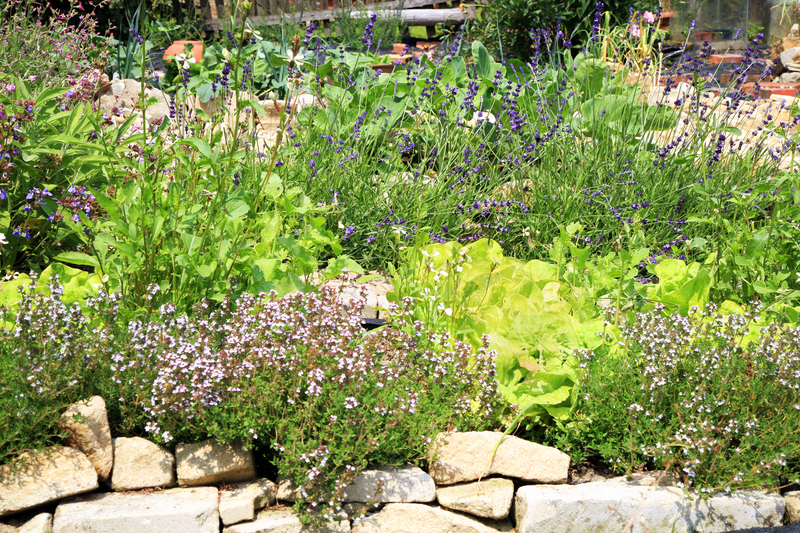Natural Solutions for Breaking Down Tree Stumps in Your Backyard
Are you dealing with stubborn tree stumps cluttering your backyard? Instead of resorting to harsh chemicals or expensive stump grinders, consider natural solutions for breaking down tree stumps. Discover how to safely, efficiently, and eco-consciously remove unwanted stumps from your outdoor space. In this comprehensive guide, we'll explore everything from organic decomposition methods to homemade natural stump killers, answering your questions and empowering you to reclaim your garden.
Table of Contents
- Why Remove Tree Stumps in Your Backyard?
- Key Benefits of Natural Stump Removal
- Organic Decomposition Methods
- Household Solutions for Stump Breakdown
- Boosting Microbial Activity: Nature's Helpers
- Manual Natural Techniques for Tree Stump Removal
- Preventing Stump Regrowth Naturally
- Frequently Asked Questions
- Conclusion: Transform Your Backyard the Natural Way
Why Remove Tree Stumps in Your Backyard?
Tree stumps are often overlooked, but leaving them in your backyard can lead to more problems than you'd think. Here are the main reasons homeowners opt for effective and natural stump removal solutions:
- Unsightly Appearance: Stumps can make even the prettiest garden look neglected.
- Pest Attraction: Remaining wood attracts termites, ants, beetles, and fungi.
- Tripping Hazard: Exposed stumps put your family at risk for injuries, particularly for kids and seniors.
- Obstructs Landscaping: Stumps interfere with mowing, planting, and landscaping projects.
- Unintentional Growth: Some species regrow as suckers, creating a dense thicket if not addressed.
While chemical options and mechanical grinders are available, many homeowners prefer to use natural methods to protect the soil, nearby plants, and groundwater from contaminants.
Key Benefits of Natural Stump Removal Methods
- Eco-Friendly and Safe: Natural methods avoid synthetic chemicals and protect your backyard ecosystem.
- Cost-Effective: Most natural stump decomposition solutions require minimal investment.
- Improved Soil Quality: Decomposition naturally adds organic material back to the earth, enriching your garden.
- Low Environmental Impact: These techniques prevent pollution and preserve beneficial soil life.
- Safe for Kids & Pets: Natural approaches ensure no harmful residues are left behind, keeping children and animals protected.
Discovering eco-friendly ways to break down tree stumps can help you create a safer and more attractive backyard, all while supporting the health of your garden.
Organic Decomposition Methods: Nature's Stump Break Down Process
Understanding Stump Decomposition
Decomposition is the natural breakdown of wood by fungi, bacteria, and insects into soil components. While it can happen passively over years, using certain techniques can speed up this process significantly.
Step-by-Step Guide to Accelerating Decomposition
-
Cut the Stump Low:
Using a chainsaw or handsaw, cut the stump as close to the ground as possible to reduce mass and expose more wood to organisms. -
Drill Holes for Better Penetration:
Drill several deep holes (about 1-inch wide and 8-12 inches deep) across the stump's surface. This increases internal surface area and allows moisture, fungi, and nutrients to reach the heartwood. -
Moisten the Wood:
Water accelerates decay. Soak the area around and over the stump, especially during dry spells. -
Add Organic Material:
Fill holes with rich organic matter--compost, manure, or rich garden soil--which introduces beneficial microbes and moisture. -
Apply Nitrogen Sources:
Sprinkle high-nitrogen fertilizer (like blood meal or bone meal) or even leftover coffee grounds over the stump. This feeds decomposers and speeds up decay. -
Cover and Retain Moisture:
Place a tarp or thick layer of mulch/leaves over the stump to keep it damp, dark, and inviting to decaying organisms.
Repeat watering and adding organic amendments every few weeks. Over time, the stump will soften, break down, and enrich your soil.
Household Solutions for Stump Breakdown
How to Use Salt to Rot Tree Stumps
Epsom salt (magnesium sulfate) and rock salt (sodium chloride) are sometimes used as natural stump killers. They dehydrate the wood, kill resistant roots, and promote natural decay. Here's a safe method:
- Drill holes: Make deep holes into the stump's top and sides.
- Fill with salt: Pour Epsom or rock salt into holes. Pack tightly.
- Add water: Pour a little water to help dissolve and distribute salts.
- Seal from rain: Cover with plastic or tarp to avoid rinsing the salt away.
*Note: Avoid excessive rock salt as it can leach into the soil and harm nearby plants. Epsom salt is safer and provides valuable magnesium.*
Vinegar: Natural Herbicide for Small Stumps
Full-strength white vinegar dries tissues and roots, preventing regrowth. Apply vinegar thoroughly into holes and over cuts. Although not as powerful as salt, it's a *pet-safe* chemical-free way to speed up tree stump decomposition.
Boiling Water Method
Pouring boiling water into stump holes is effective for smaller stumps. The heat kills living root tissues, making it harder for the tree to send up new shoots, while starting wood breakdown.
Boosting Microbial Activity: Nature's Little Experts in Stump Removal
Use Fungi to Accelerate Stump Rot
Mushroom spores and mycelium are fantastic at breaking down woody stumps. Here's how to harness their power:
- Drill or cut notches into the stump surface.
- Place mushroom spawn (like oyster, shiitake, or wine cap spawn) in the holes or notches.
- Cover loosely with moist sawdust, mulch, or a towel to retain humidity.
- Keep moist and shaded for best results.
Not only does this break down the stump, but it can also provide edible mushrooms for your kitchen! Cultivating fungi is a sustainable and natural technique for tree stump breakdown.
Encourage Bacteria and Insects
Nature's decomposers--beetle larvae, ants, and beneficial bacteria--do much of the heavy lifting. To attract them:
- Keep the stump moist and covered with organic material.
- Avoid pesticides which kill decomposer populations.
- Allow leaf litter, straw, and mulch to build up over the stump, providing a habitat and food source.
This technique may take months to a couple of years, but it leaves your backyard healthier than before.
Manual Natural Techniques for Tree Stump Removal
Digging Out Small Stumps Naturally
For fresh or smaller stumps, a simple shovel or mattock may suffice. Follow these steps:
- Soak the soil: Water heavily to soften the ground and make digging easier.
- Dig a trench: Dig a circular trench around the stump, exposing large roots.
- Cut roots: Use a pruning saw or axe to sever exposed roots.
- Rock and remove: Pry and rock the stump back and forth, breaking remaining roots, until you can pull the stump free.
- Backfill: Fill the hole with compost and topsoil to restore your lawn or garden bed.
Using a Winch or Lever for Larger Stumps
Larger stumps may require mechanical leverage. Attach a sturdy chain around the stump's base and use a hand winch, come-along, or lever arm to ease it out. Be careful and always prioritize safety.
Burning: A Last Resort - Let Nature Take Its Time
Controlled stump burning is sometimes suggested as a natural method, but it risks soil sterilization, air pollution, and local fire ordinances. Whenever possible, prioritize organic decomposition and manual techniques first.
Preventing Stump Regrowth Naturally
Certain tree species (like willow, elm, and poplar) send up new shoots if their stumps aren't fully killed. To prevent this:
- Cut stumps as low as possible.
- Apply salt, vinegar, or boiling water to living surfaces.
- Keep dark and covered to discourage photosynthesis.
- Repeat applications as needed until regrowth ceases.
With persistence and patience, these natural methods to break down and prevent tree stump regrowth are both effective and environmentally responsible.
Frequently Asked Questions About Natural Stump Removal
-
How long does it take for a stump to rot naturally?
Depending on tree type, size, and methods used, a stump will generally decompose in 6-24 months. Acceleration techniques (drilling, nitrogen, fungi) can reduce this time. -
Is Epsom salt truly eco-friendly for stump removal?
Yes, Epsom salt is much safer for your garden than harsh chemical herbicides and naturally breaks down in the soil. Apply carefully to avoid over-concentration. -
What's the quickest natural way to remove a stump?
Combining drilling, Epsom salt, compost, and fungal inoculation speeds up breakdown. Manual removal is fastest for small stumps but may be labor-intensive. -
Are there any risks to pets or children?
No, as long as you use pure Epsom salt, vinegar, or organic material and avoid chemical pesticides, your backyard remains safe for all family members. -
Should I call a professional tree removal service?
If the stump is very large, near utilities, or if you need rapid results, professional help may be wise. For most home gardeners, natural removal is practical and satisfying.
Conclusion: Transform Your Backyard the Natural Way
Tree stumps don't have to be a permanent eyesore in your garden. Employing natural decomposition methods, organic stump killers, and a little hands-on effort, you can safely break down tree stumps without harming your environment. From Epsom salt to edible mushrooms, the best solutions combine sustainability, safety, and respect for backyard wildlife.
Patience is key--nature's processes take time, but they reward you with healthier soil and a cleaner landscape. For a beautiful, functional yard, trust these natural solutions for breaking down tree stumps in your backyard and enjoy the transformation!
For more gardening tips and eco-friendly backyard solutions, stay tuned to our tree care and natural landscaping advice blog. Share your own stump removal success stories in the comments!

